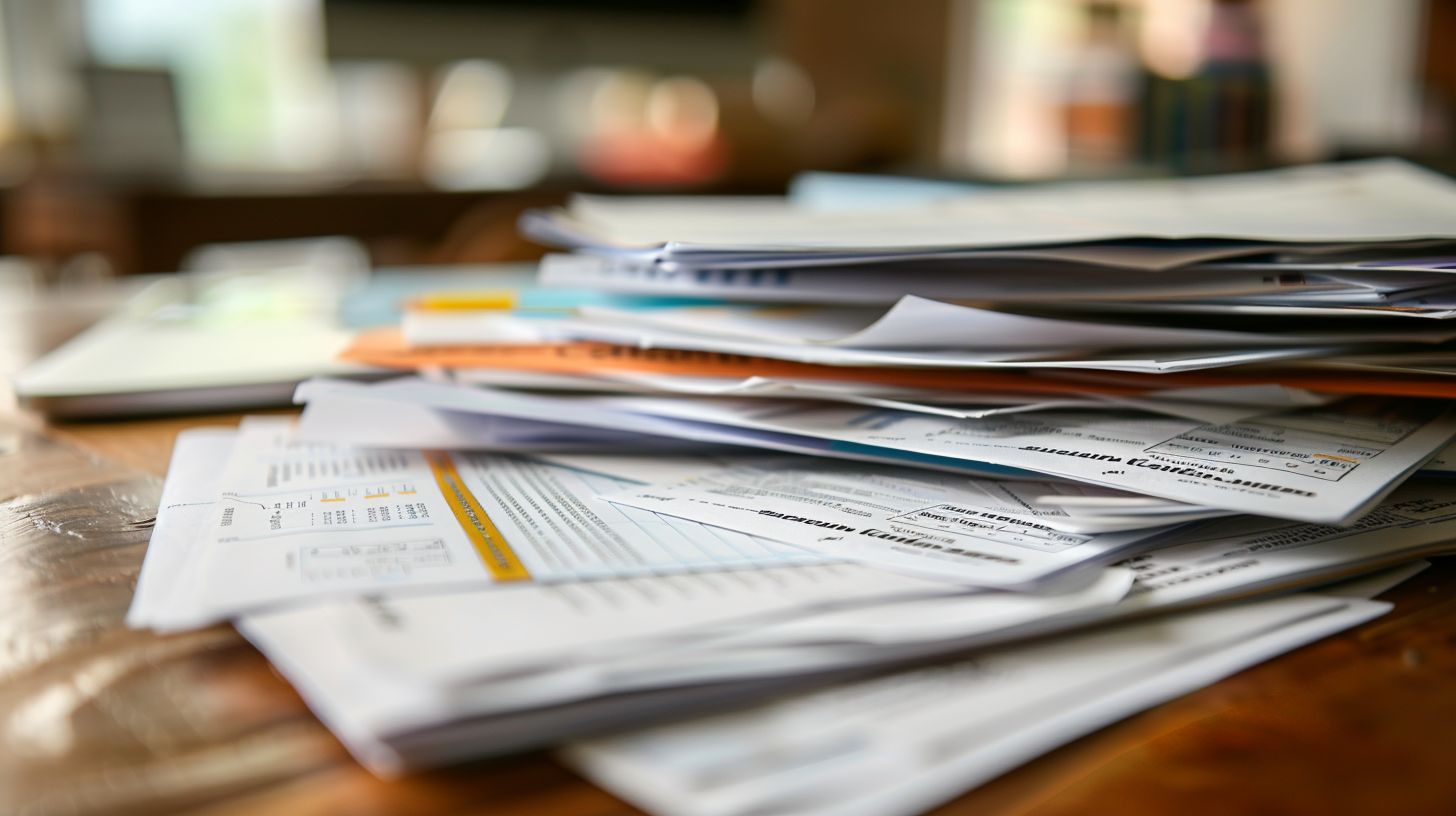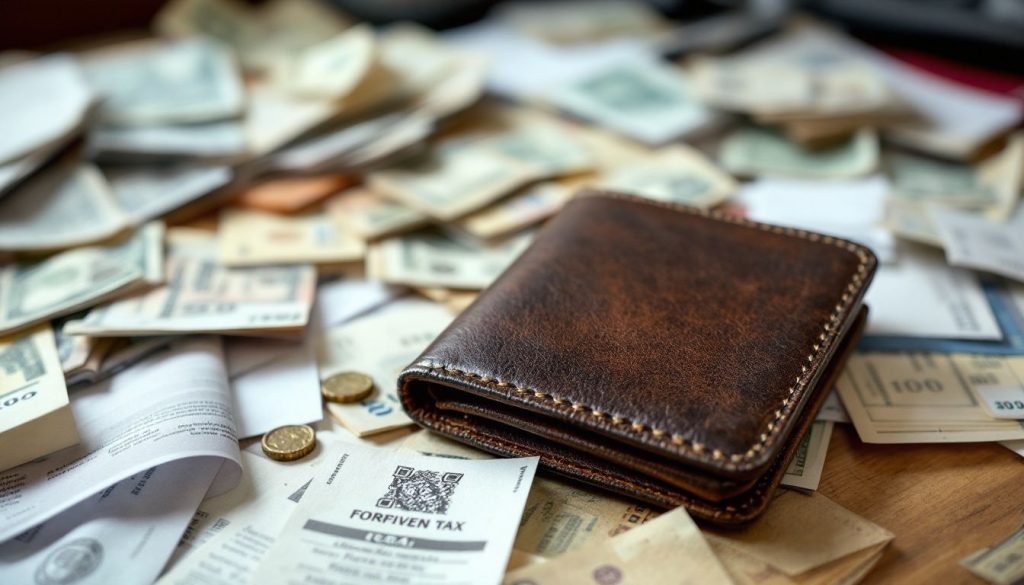How to Implement the Debt Snowball Method for Quick Debt Payoff

Feeling overwhelmed by debt? You’re not alone. Many people find themselves struggling to manage monthly payments across credit cards, student loans, and car notes. It can feel like a never-ending cycle of bills and interest rates piling up. But there’s a method that might just be the game-changer you need: the debt snowball method.
This approach comes recommended by personal finance expert Dave Ramsey as part of his 7 Baby Steps for kicking debt to the curb. It’s all about tackling your debts from the smallest balance to the largest, giving you quick wins that keep you motivated on your journey to financial freedom.
Our blog post will guide you through implementing this debt-reduction strategy step-by-step, plus compare it with another popular approach known as the debt avalanche method. By celebrating each victory along the way and tracking your progress visually, staying motivated becomes part of the process itself.
Get ready to say goodbye to your debts faster than you thought possible! Stay tuned.
Key Takeaways
- The debt snowball method involves paying off your smallest debts first, rolling over payments to bigger debts as you go.
- This strategy boosts motivation by offering quick wins and helps maintain focus on eliminating debt.
- Keep tracking your progress visually with charts or apps to stay motivated throughout the process.
- Choosing between the snowball and avalanche methods depends on personal preference: quick wins versus saving on interest.
- Celebrate each paid-off debt as a victory to keep spirits high and maintain momentum toward total debt freedom.
Understanding the Debt Snowball Method

The Debt Snowball Method is a plan where you pay off your money owed starting with the smallest amounts first. It makes you feel good to see debts disappearing, keeping you pumped to tackle bigger ones next.
Overview of the Process
The debt snowball method starts with you listing your debts from the smallest balance to the largest. Ignore the interest rates for now. This approach focuses on tackling smaller balances first while keeping up with minimum payments on your other debts.
As soon as you pay off one small debt, you feel a win and get motivated to tackle the next.
Next, put any extra cash beyond minimum payments towards your smallest debt until it’s gone. Then take what you were paying on that now-zero account and add it to the payments on your next smallest debt.
Keep doing this, rolling over each paid-off amount to bigger debts like a snowball growing larger as it rolls downhill. This cycle repeats until you’ve cleared all your consumer debt, turning small victories into total freedom from credit card bills and personal loans.
Psychological Benefits
After learning how the debt snowball method works, it’s clear this approach has powerful psychological advantages. Paying off debt might seem more about numbers than feelings. But success with the debt snowball method proves that mindset matters a lot.
Seeing a small loan disappear because you paid it in full makes you feel like you can do anything. It tells your brain, “I got this,” and suddenly, the rest of your debts don’t seem so scary.
This boost in motivation is key. It turns out, winning over debts is mostly about how you act and think. The quick wins from paying off smaller debts light up paths to bigger victories ahead.
Each time you say goodbye to a credit card bill or student loan payment, your confidence grows stronger. This isn’t just good for getting rid of what you owe faster; it changes how you handle money altogether.
You start making smarter choices without feeling stressed or overwhelmed by big financial goals or terms like credit scores and interest payments.
Steps to Implement the Debt Snowball Method

To use the Debt Snowball Method, start by organizing your bills. Focus on paying off your smallest balance first while still covering monthly dues on larger amounts.
List All Debts from Smallest to Largest
First, gather all your debts such as medical bills, credit card debt, car loans, and student loan debt. Put them in order from the smallest amount you owe to the largest. This step does not consider interest rates or annual percentage rates (APRs).
It’s all about knowing every dollar you need to pay back.
Make a list on paper or use a spreadsheet. Seeing everything written down helps you understand your total debt. You will focus on paying off these debts one by one, starting with the smallest balance first.
This method makes it easier to see progress quickly.
Focus on small wins to build momentum for total debt freedom.
Make Minimum Payments on All But the Smallest Debt
Pay all your debts each month, but focus on the little one. Keep paying the smallest amount you owe more quickly. Use money from savings or cut back on spending to find extra cash.
This step helps lower what you owe overall.
Paying off small debts first gives a victory feeling. It makes tackling bigger debts easier later on. Each time you finish paying one debt, use that payment for the next smallest debt.
Your payments grow like a snowball rolling downhill, getting bigger and faster to clear all your debts.
Apply Extra Payments to the Smallest Debt
Focus on the debt with the least amount first. Put any extra money you have towards this small debt while still paying the minimum on your other debts. This method makes you feel good quickly because you see results sooner.
For example, if you owe $2,000 on a credit card and can add an extra $300 to your usual payment, do it. As soon as this credit card is paid off, move that entire payment amount to the next smallest debt.
Keep using this strategy until all your debts are gone. With each paid-off account, the money for payments grows bigger like a snowball rolling downhill. This approach reduces your debts one by one and improves your ability to manage larger payments over time without adding new debt.
Your goal is clear: eliminate each debt from smallest to biggest until there’s none left.
Comparing Debt Snowball with Debt Avalanche

When choosing how to pay off debt, you might look at the Debt Snowball and Debt Avalanche methods. The main difference lies in their approaches: one focuses on paying off small debts first for quick wins, while the other targets debts with high interest rates to save money over time.
Key Differences
The debt snowball method focuses on paying off debts from the smallest balance to the largest. This approach helps people see quick wins and keeps them motivated. On the other hand, the debt avalanche method targets debts with the highest interest rates first, regardless of the balance size.
This strategy can save money on interest charges over time.
Choosing between these methods depends on what motivates you more: seeing debts disappear quickly or saving money in the long run. The snowball method might make you feel good as you knock out smaller debts fast.
But if cutting down on how much you pay in credit card interest is your goal, then the avalanche method could be better for your finances.
Pros and Cons of Each Method
Deciding between the debt snowball and debt avalanche methods is crucial for effective debt reduction. Each strategy has unique advantages and pitfalls that can impact your financial journey.
Pros of the Debt Snowball Method:
- Quick Wins: This method allows you to see progress early by paying off smaller debts first. It boosts your motivation to keep going.
- Easier Motivation: Celebrating these small victories helps maintain your drive toward becoming debt-free.
Cons of the Debt Snowball Method:
- Higher Total Interest: You may end up paying more interest overall because larger debts with higher interest rates wait longer for repayment.
- Longer Payoff Duration: It can take more time to be completely free from debt as smaller debts are prioritized, regardless of interest rates.
Pros of the Debt Avalanche Method:
- Saves Money on Interest: By focusing on debts with the highest interest rates first, you save more money in the long run.
- Shorter Payoff Time: Generally, this method gets you out of debt quicker than the snowball method since high-interest debts don’t accumulate extra charges over time.
Cons of the Debt Avalanche Method:
- Slow Initial Progress: It might take longer to pay off your first big debt, which can feel discouraging if you need quick wins to stay motivated.
- Requires Discipline: Without the early victories provided by the snowball method, sticking to a strict repayment plan demands a lot of self-control.
Both methods demand careful planning and dedication, but understanding their pros and cons helps you choose the right path for your debt relief journey. Whether it’s minimizing interests with the avalanche approach or boosting morale through small wins with snowballing, picking a strategy that fits your needs is a step forward in achieving financial freedom.
Staying Motivated

Keeping your spirit high is key. Celebrate each small victory and track your success visually to keep moving forward.
Celebrating Small Wins
Paying off debt feels great. It’s like hitting a home run in baseball or scoring a goal in soccer. Each time you clear a small debt, it’s worth celebrating. Think of it as your personal victory dance.
This keeps your spirits high and pushes you to keep going. You could treat yourself to something small, like cookies or a movie night at home.
Track these wins visually too. Use charts or apps on your smartphone to see how much debt you’ve knocked out. Watching those numbers drop can be very motivating! Plus, sharing this progress with friends or family can help them cheer you on for your next win.
Credit counseling services often suggest using visual trackers because they make the impact of each payment easy to see and understand.
Visual Progress Tracking
Use charts and graphs to see your progress in getting rid of debt. This method lets you watch as small debts get cleared one by one, like the $2,000 on your credit card. Seeing these changes motivates you to keep going.
You can use tools like spreadsheets or apps designed for tracking money to help with this.
Next, focus on celebrating every win along the way.
Conclusion
Paying off debt takes work, but the debt snowball method makes it simpler. You list your debts from least to most and tackle them head-on. With each small debt you clear, you gain more momentum, like rolling a snowball down a hill.
This method reduces your debts quickly and also boosts your spirits by showing you can do it. So start making your list and watch as your debts get smaller one by one, leading you to financial freedom.
FAQs
1. What is the debt snowball method?
The debt snowball method is a way to pay off what you owe faster by starting with your smallest debts first and working your way up to the bigger ones.
2. How do I start using the debt snowball method?
First, list all your debts from smallest to largest. Then, focus on paying more than the minimum on your smallest debt while making minimum payments on others. Once you finish paying off one, move to the next size up.
3. Can I use the debt snowball method for all types of debts?
Yes! You can apply this strategy to various kinds of debts including credit card bills, auto loans, student loans, and even home equity lines of credit.
4. Is it smart to refinance or consolidate my debts before starting the debt snowball?
Refinancing or consolidating might lower your interest rates and monthly payments. It’s a good idea if it saves money in the long run but doesn’t let it stop you from starting your payoff plan.
5. Will paying off my debts using this method improve my credit score?
Paying down balances can positively impact your credit report over time since it lowers your overall amount owed and shows lenders that you’re responsible with borrowed money.
6. Are there tools or resources that can help me implement this strategy effectively?
Yes! Many online calculators and budgeting apps exist that specifically help track progress when using repayment plans like the debt snowball method.







